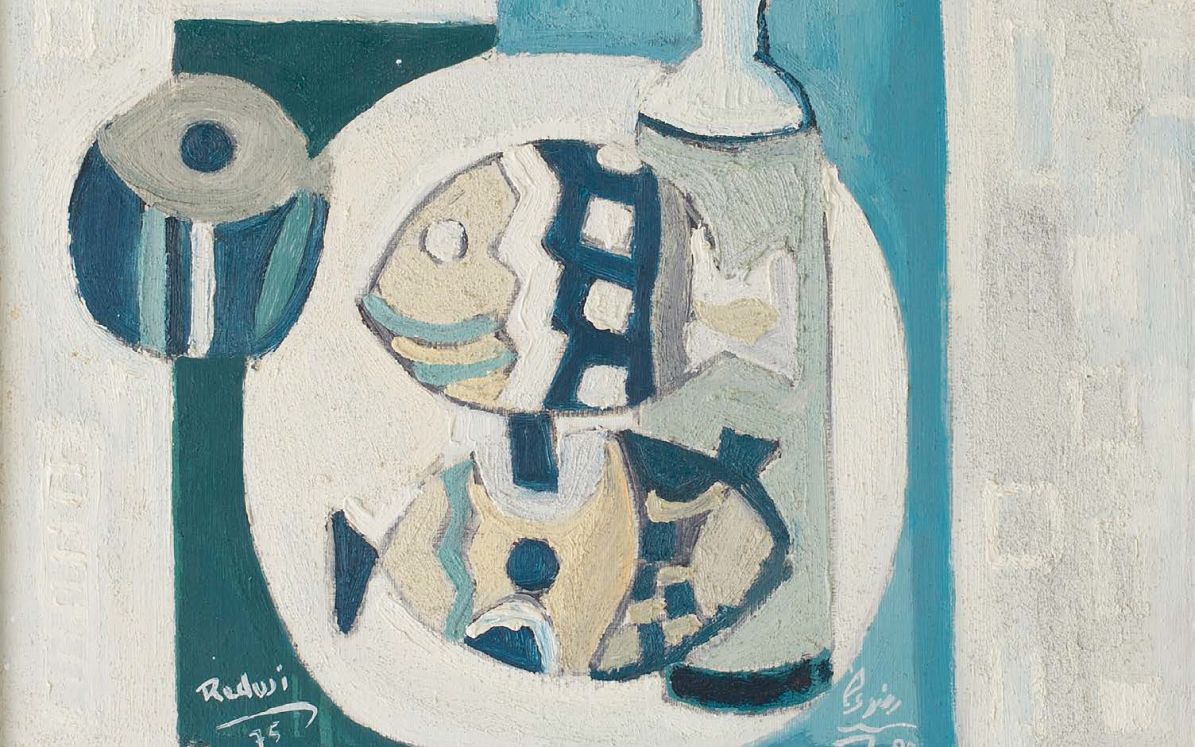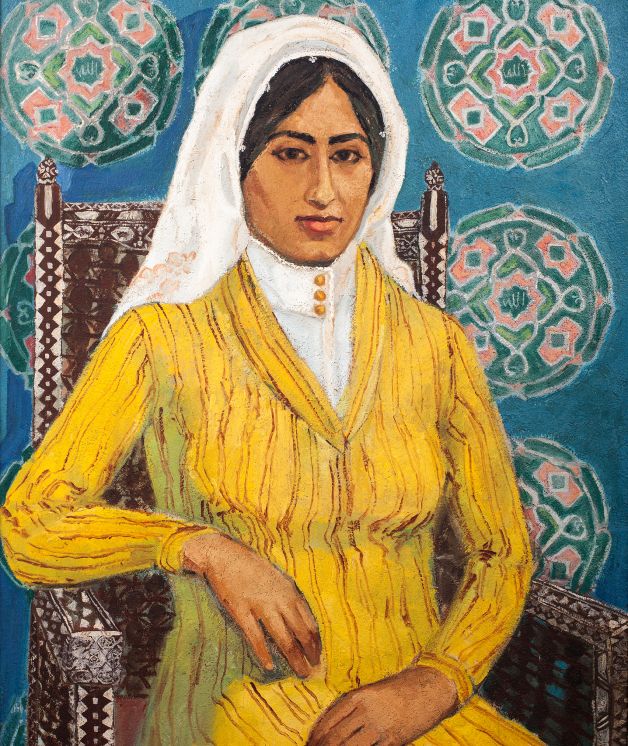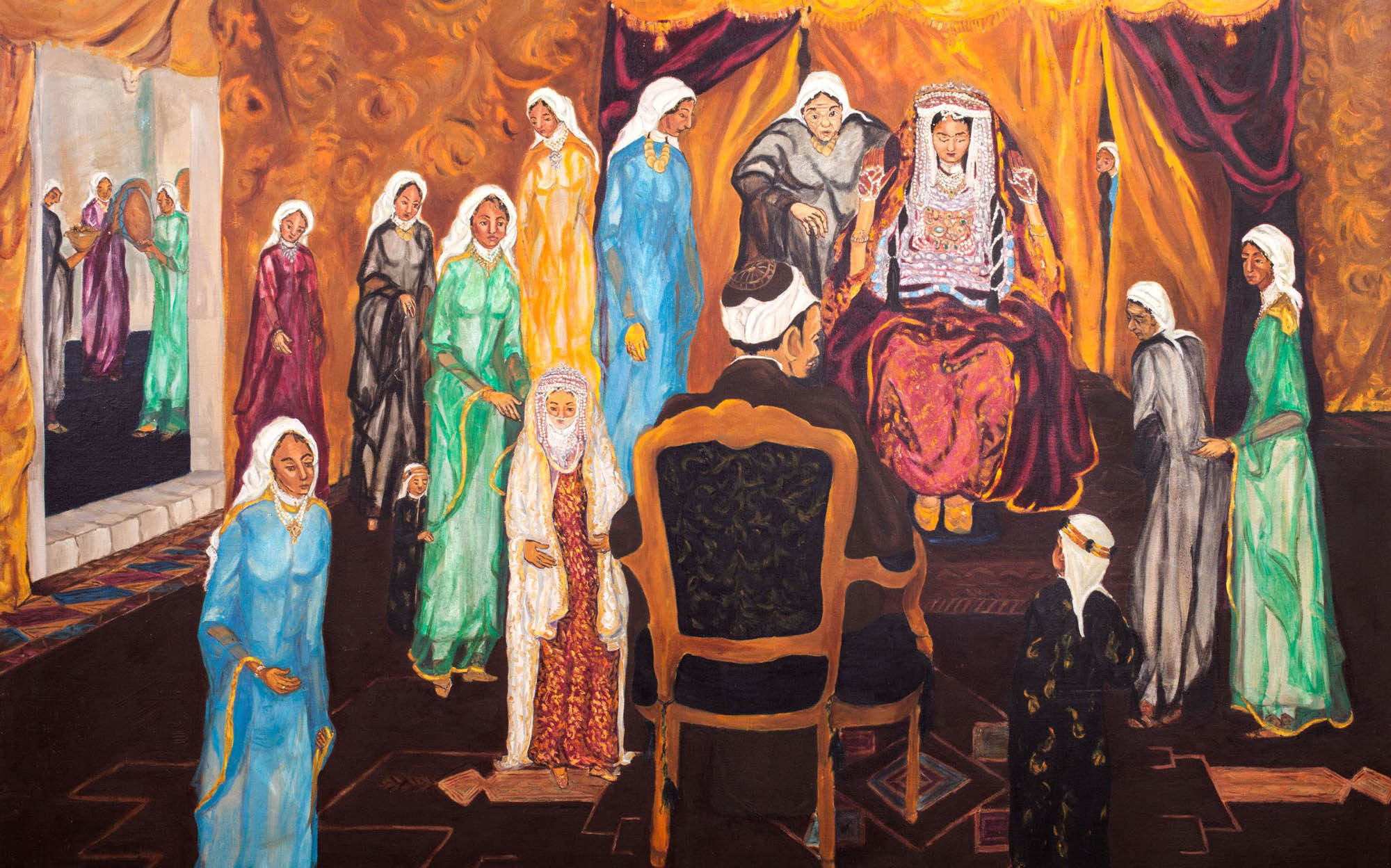Al Balad, the old heart of Jeddah
[Bride of the Red Sea], is a city of legends. Even its name, whether myth or fact, if pronounced a certain way, means “grandmother,” and who is the grandmother of everyone? In Ammaria neighborhood, one of the oldest cemeteries in Jeddah, it is said that lies a legend as old as time - the tomb of biblical Eve [Hawa in Arabic]. Travelers, such as Ibn Jubair, an Arab geographer and traveler from the 12th century, said that, during his visit to Jeddah, he saw an old dome said to
be the home of Eve.
But that is just one of the many stories of Jeddah. Every corner, every roundabout, has a story, and one of its most famous locations, is Al Balad (The city), a Unesco World Heritage site worth visiting and getting lost in a maze of alleys and a souq of little quaint shops with authentic Saudi creations.
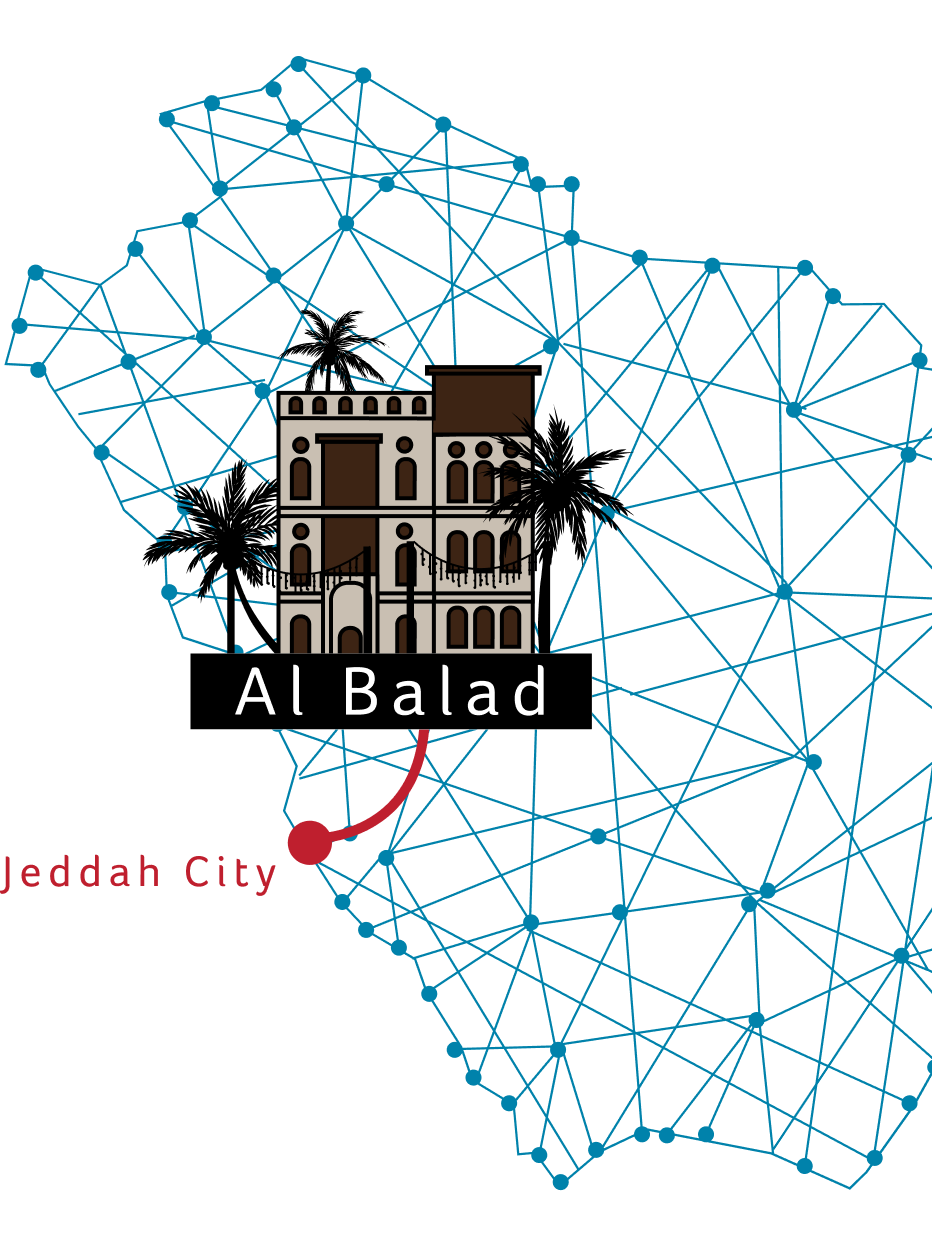
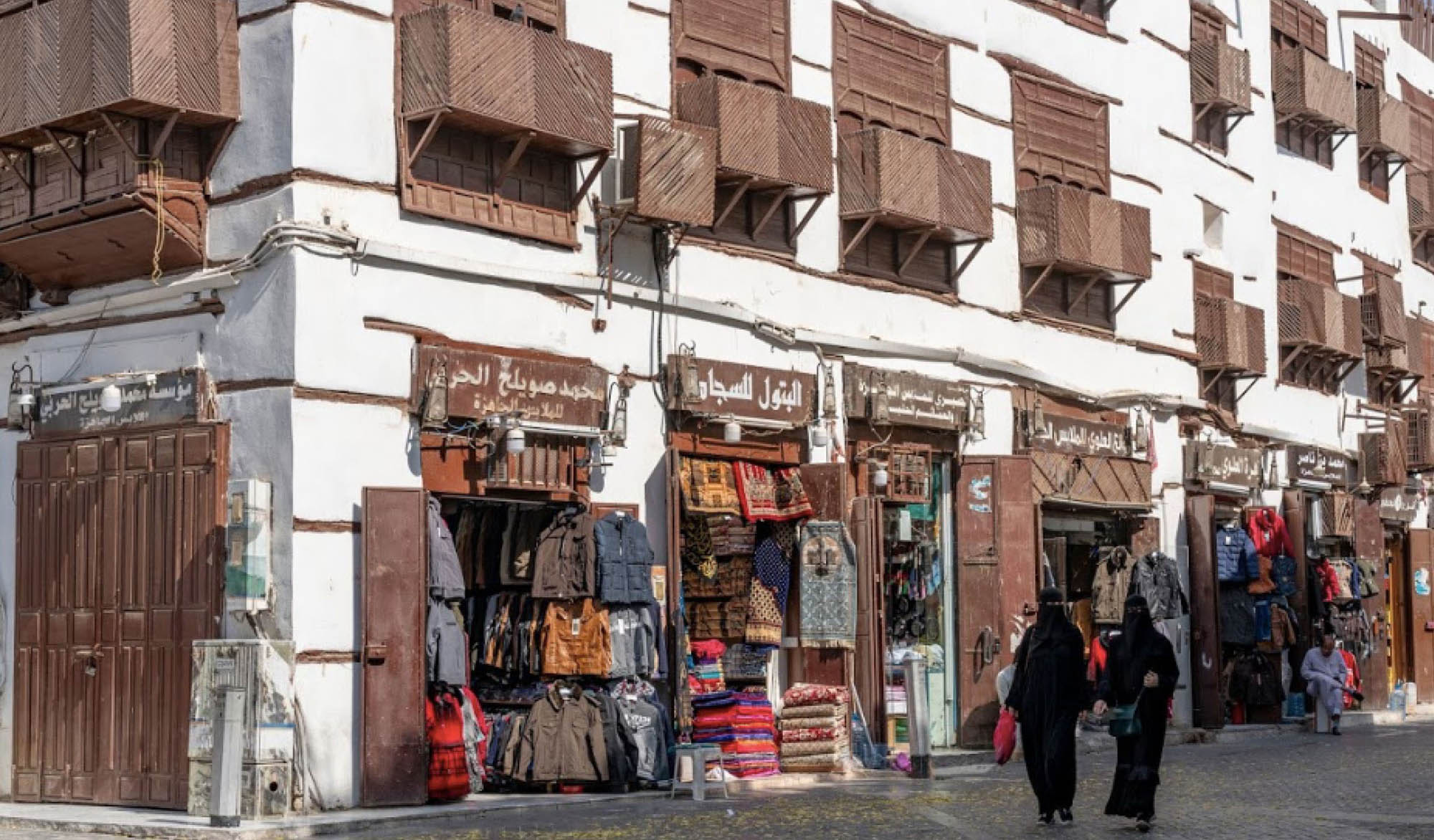
From the 7th century AD it was established as a major port for Indian Ocean trade routes, channeling goods to Makkah. It was also the gateway for Muslim pilgrims to Makkah who arrived by sea when the third Caliph Othman Ibn Affan (579 AD-656 AD) made it the official port of Makkah. This strict association with the Muslim annual pilgrimage (Hajj) gave Historic Jeddah a cosmopolitan population where Muslims from Asia, Africa and the Middle East resided and worked, contributing to the city`s growth and prosperity. Historic Jeddah also reflects the final flourishing of the Indian Ocean sea trade after the opening of the Suez Canal in 1869 and the introduction of steamboats that linked Europe with India and Asia.
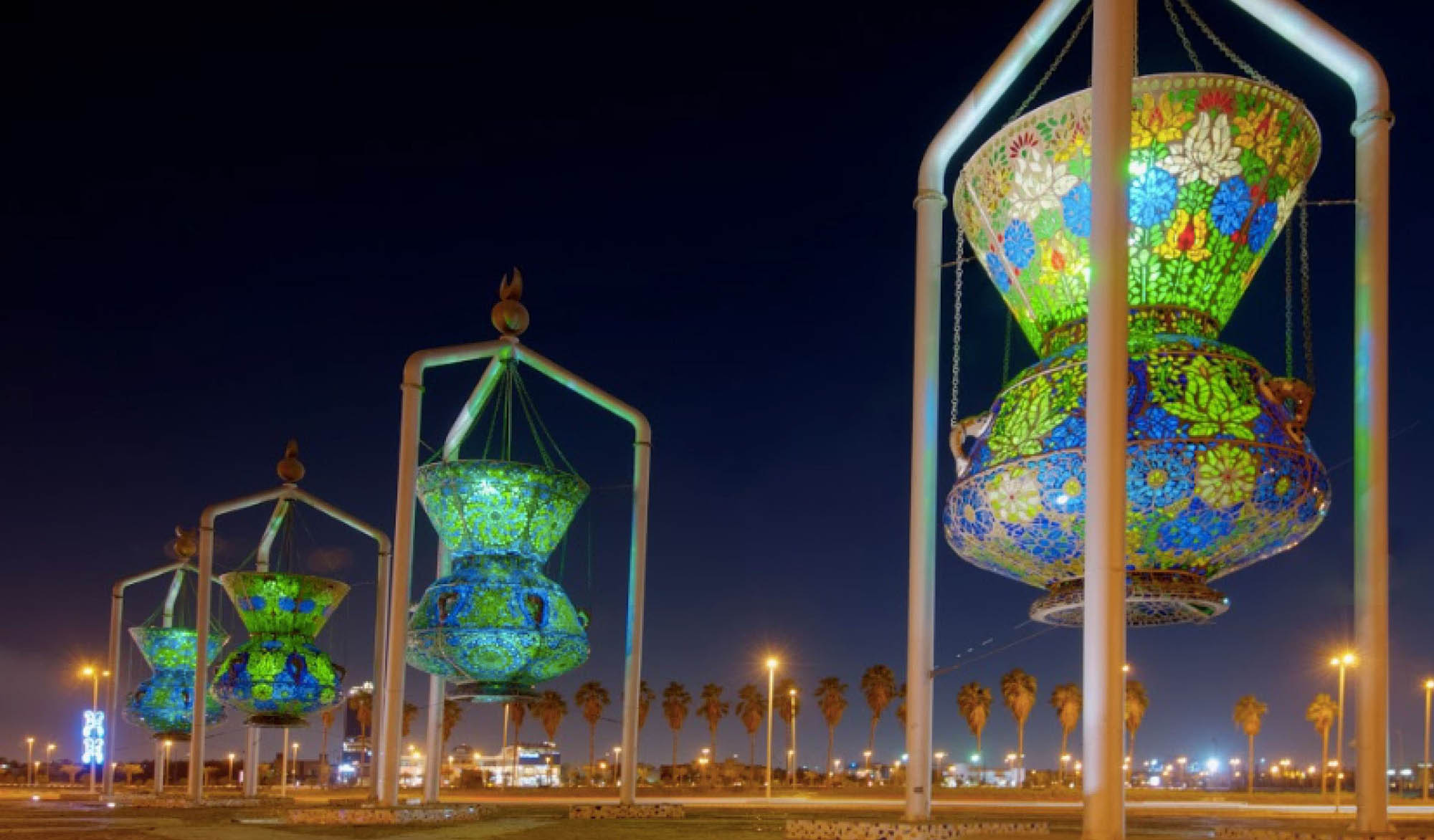
One of Jeddah’s famous roundabout landmarks: The Four Lanterns (Mamluk Mosque Lamps).
These twin roles saw the city develop into a thriving multicultural center, characterized by a distinctive architectural tradition, including tower houses built in the late 19th century by the city’s mercantile elites, and combining Red Sea coastal coral building traditions with hand carved latticed-wood designs with influences from along the trade routes. Craftsmen built small, secluded balconies and windows called rawasheen with mashrabiya elements. While large enough for residents to sit and look out on the street below, they also offered full privacy and were constructed in a way that would catch every passing wind.
A walk along the old pilgrimage road, also known as Al Dahab Street, is bustling with street vendors, carts loaded with trinkets and brightly colored stores, a great place to pick up an unusual souvenir. The proudest and most carefully restored of all buildings in Al Balad is the Naseef House. It was built at the end of the 1800s, first to house the wealthy merchant Naseef family and then receive important visitors to Jeddah – not least after 1925, when the Kingdom’s founder King Abdulaziz Al-Saud used it as a royal residence. Inside, the ceilings are high and reception rooms grandiose, and in the middle of the house, a wide wooden staircase runs all the way up to allow for horses or camels to bring foodstuff all the way to the kitchen on top.
Naseef House was for a long while the tallest building in Jeddah – and remained so until the 1970s. It also boasted the city’s only tree outside, and letters sent to the Naseef family would be marked ‘the house by the tree.’ From old bakeries to old photographs, to new art installations as well as one of the oldest mosques —Masjid Shaffie, also known as Umary mosque after Umar the Second caliph of Islam (584 AD-644 AD) with an 800-year-old minaret, there is something to see and discover in every corner.
These twin roles saw the city develop into a thriving multicultural center, characterized by a distinctive architectural tradition, including tower houses built in the late 19th century by the city’s mercantile elites, and combining Red Sea coastal coral building traditions with hand carved latticed-wood designs with influences from along the trade routes. Craftsmen built small, secluded balconies and windows called rawasheen with mashrabiya elements. While large enough for residents to sit and look out on the street below, they also offered full privacy and were constructed in a way that would catch every passing wind.
A walk along the old pilgrimage road, also known as Al Dahab Street, is bustling with street vendors, carts loaded with trinkets and brightly colored stores, a great place to pick up an unusual souvenir. The proudest and most carefully restored of all buildings in Al Balad is the Naseef House. It was built at the end of the 1800s, first to house the wealthy merchant Naseef family and then receive important visitors to Jeddah – not least after 1925, when the Kingdom’s founder King Abdulaziz Al-Saud used it as a royal residence. Inside, the ceilings are high and reception rooms grandiose, and in the middle of the house, a wide wooden staircase runs all the way up to allow for horses or camels to bring foodstuff all the way to the kitchen on top.
Naseef House was for a long while the tallest building in Jeddah – and remained so until the 1970s. It also boasted the city’s only tree outside, and letters sent to the Naseef family would be marked ‘the house by the tree.’ From old bakeries to old photographs, to new art installations as well as one of the oldest mosques —Masjid Shaffie, also known as Umary mosque after Umar the Second caliph of Islam (584 AD-644 AD) with an 800-year-old minaret, there is something to see and discover in every corner.
“Jeddah
Enchantment of Babel,
Full of people,
All the people
Oh,Gate of Makkah.
Assuredly, Jeddah first
….and Jeddah last.”
-Poet Talal Hamzah from the poem ‘Jeddah Ghayr’ (Jeddah is different)
